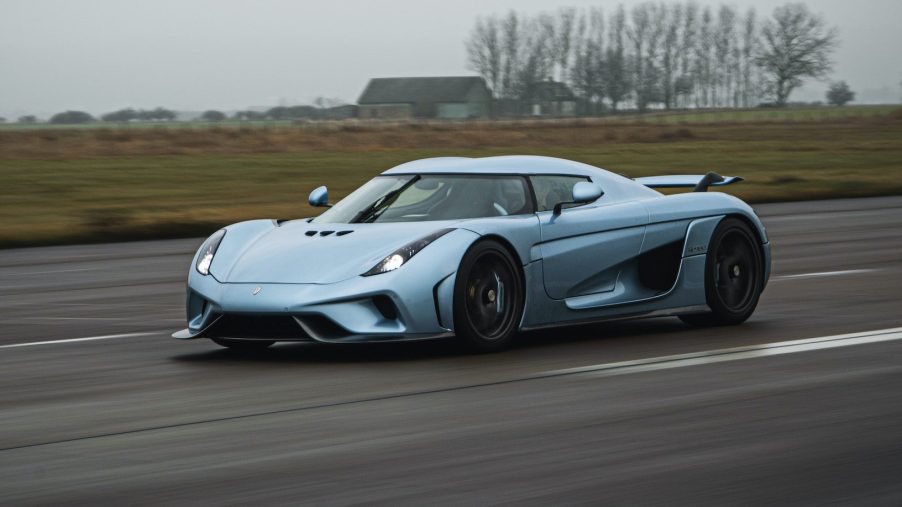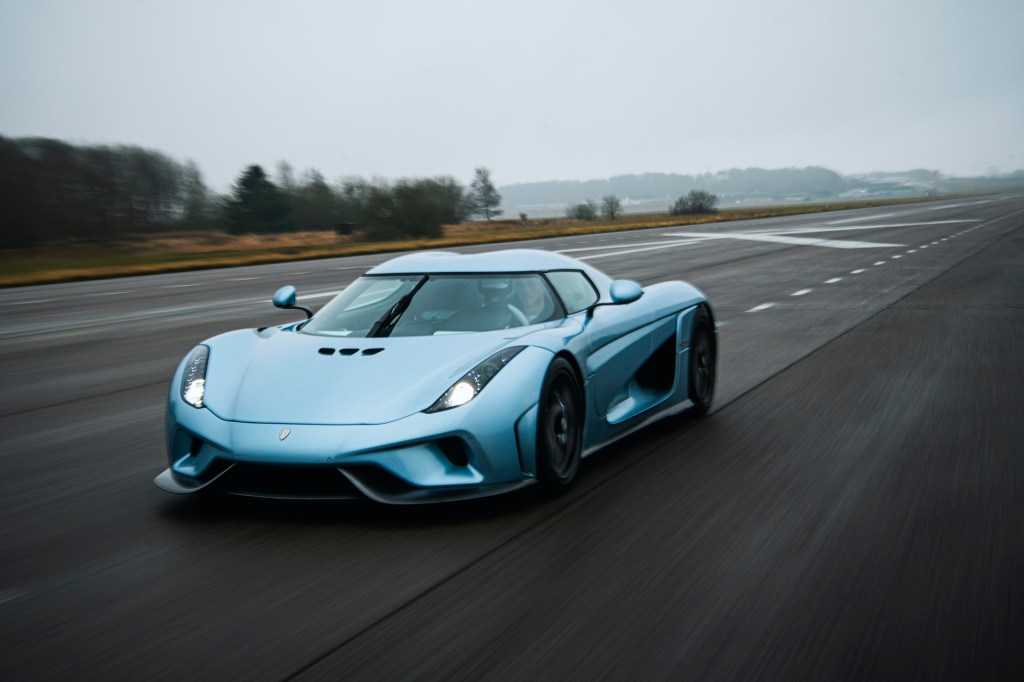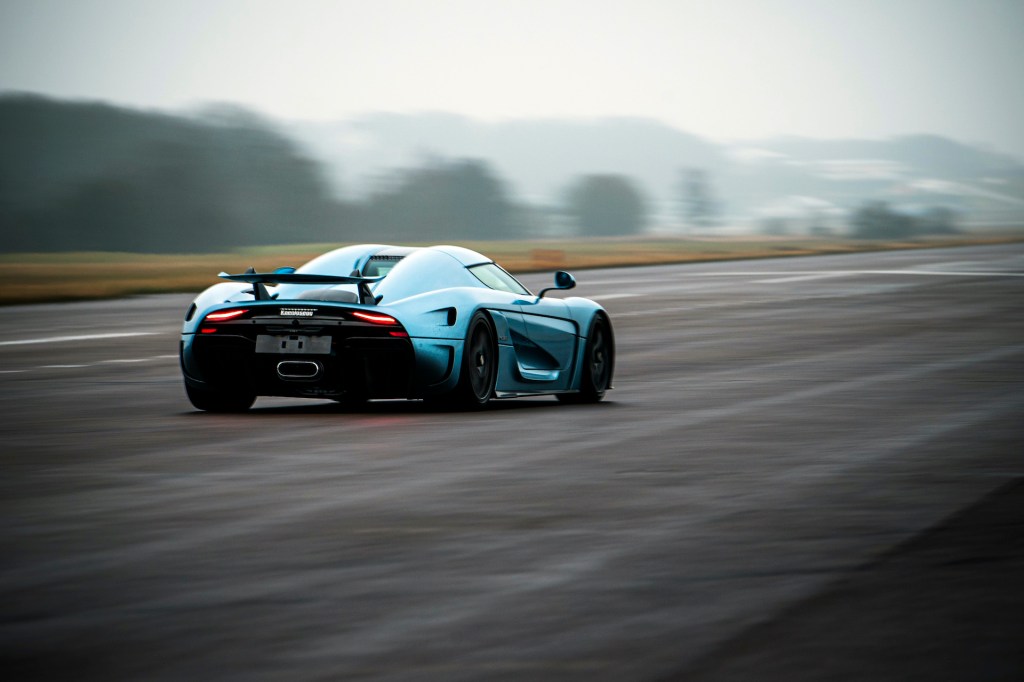
This Is the Best Way to Crash a Million-Dollar Hypercar
Hypercar manufacturers often produce cars in minimal numbers. As a result, they can’t send dozens of cars to be crash-tested. To get around this issue, Koenigsegg came up with an ingenious way to complete all of its certifications with essentially one car. More specifically, we’re looking at the crash testing for the Koenigsegg Regera, a carbon-fiber-bodied, 1,500-hp hypercar. In a video by Apex One, Koenigsegg’s CEO, Christian von Koenigsegg, claims the carbon-fiber monocoque chassis is so strong; it can withstand multiple crashes without breaking.
The Regera is already a strange hypercar

Koenigsegg showcased its crash testing strategy while developing its first hybrid hypercar, the Regera. According to Car and Driver, the Regera is made almost entirely out of carbon-fiber and Kevlar. The result is a car that weighs just 3,500 lb despite having a large and complex powertrain. Speaking of power, under the Regera’s hood lives a twin-turbo 5.0-liter V8 combined with three electric motors to develop 1,500 hp.
One of the most unique things about the Regera is that it doesn’t have a transmission. Instead, the Regera counts on Koenigsegg’s Direct Drive system. In short, the system works to send all of the available power to the rear wheels, combining electric and internal combustion generated power. However, before the first Regera makes it to a customer, it must pass the rigorous crash tests.
How many times can you rebuild the same car?
Koenigsegg’s hypercar crashing strategy relies largely on the carbon-fiber and Kevlar monocoque chassis. That’s because its incredible strength allows Koenigsegg to crash it repeatedly without breaking. In the video posted by Apex One, Koenigsegg’s Homologation Manager, David Tugas, states that the brand can’t afford to send off 16 cars to crash test. That’s because 16 cars are close to the company’s yearly production output. Therefore, if it acted as a mass-market manufacturer, building hypercars wouldn’t be commercially viable.
It is important to note that the Regera is not indestructible. Both the body panels and subframes are expected to shatter. However, those can easily be replaced with new components bolted onto the monocoque. The result is that Koegnisggseg can test what is essentially the same vehicle, just with different body panels. Additionally, Christian von Koenigsegg claims the incredibly strong bodywork can withstand many of the lower level impacts required for testing, meaning it doesn’t always have to be replaced. Aside from being an excellent cost-saving measure, it reemphasizes the strength of Koenigsegg’s carbon-fiber and Kevlar combination.
The airbags need to be quite clever as well

Just because your brand-new hypercar can withstand an impact doesn’t automatically make it safe. For example, Christian von Koenigsegg claimed in Apex One’s video that the Regera has smart airbags for the U.S. market. In short, these airbags have to detect the weight and size of the passenger before deploying. With that information, they can then adjust their intensity to protect even small children. What makes this test especially difficult is that the seatbelts have to be removed, so the car can only reply on its airbags to keep its passengers safe.
The result of these technological advances is that not only can your brand-new hypercar reach 250 mph, but it can also do so while keeping you incredibly safe.


